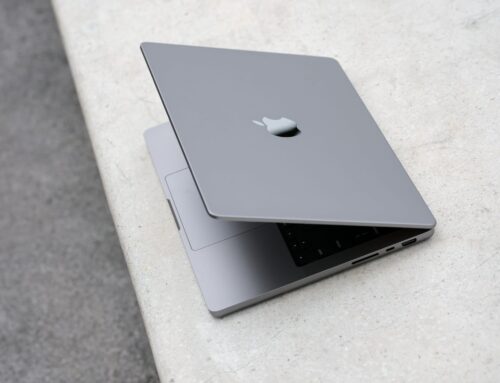MacBooks are known for their reliability and speed, making daily tasks smooth and efficient. But sometimes your MacBook might slow down, causing frustration. Whether it’s sluggish web browsing or delayed app loading, a slow MacBook can really affect your work and play.
This guide will explore the steps to diagnose the slowdown and provide practical solutions to improve speed. Following these steps can restore your MacBook’s efficiency and help prevent future slowdowns. Ready to get your MacBook back in top shape? Let’s dive in.
Diagnosing the Issues with Your Slow MacBook
Experiencing a slow MacBook can be frustrating. Recognising the signs of slow performance is the first step to fixing it. You might notice that apps take longer to open, the spinning beach ball appears frequently, or the overall system is sluggish. Sometimes, even basic tasks like browsing become tiresome with repeated lags.
Tools like the Activity Monitor are indispensable for understanding what’s slowing down your MacBook. Activity Monitor provides a snapshot of memory usage, CPU load, and other system activities, allowing you to identify which applications or processes consume the most resources easily. Launch Activity Monitor from the Utilities folder and check for processes with high CPU or memory usage. If you spot any resource-heavy culprits, consider closing those applications to free up processing power.
Another area to explore is your MacBook’s storage and RAM usage. A nearly full hard drive can significantly slow your MacBook, as it needs space for virtual memory. To check your storage, click the Apple logo at the top left of your screen, select “About This Mac,” and then click the “Storage” tab. This will show you how your storage is used and where you can clear up space. Monitoring your RAM usage is also crucial, as insufficient memory can cause your MacBook to lag when running multiple applications. Keeping an eye on these areas helps diagnose why your MacBook might be running slow and directs you toward potential solutions.
Optimising Your MacBook’s Performance
After identifying the issues, optimising your MacBook’s performance is essential. Start by freeing up hard drive space. You can do this by moving files to cloud storage or an external drive and deleting old files and applications. Empty your trash regularly and clear out downloads you no longer need. Using built-in tools like Apple’s Storage Management can help you identify large files and apps that take up excessive space.
Next, address startup programs and background applications, which can slow down your MacBook’s startup time and general performance. Open “System Preferences,” head to “Users & Groups,” and select your user account. From there, click “Login Items” and manage which programs launch at startup. Deselect non-essential applications to speed up your MacBook’s booting process.
Resetting the PRAM/NVRAM and SMC (System Management Controller) can also help with performance issues. Resetting PRAM/NVRAM can fix settings related to display resolution, volume, and time zone while resetting SMC deals with power management, battery functions, and other system configurations.
To reset PRAM/NVRAM, shut down your MacBook, turn it on and immediately press “Option + Command + P + R” together for about 20 seconds. For SMC, if your MacBook has a T2 Security Chip, shut it down, press and hold the power button for 10 seconds, and then release it. For older models, a Google search specific to your model will guide you. Following these steps ensures your MacBook maintains optimal performance.
Updating and Managing Software for Better Speed
Keeping macOS and your applications updated is crucial for maintaining speed. Updates often include performance improvements, bug fixes, and security enhancements that ensure your MacBook operates efficiently. Apple frequently releases updates that help optimise the system for better performance. To check for updates, go to the Apple menu, click “System Preferences,” and select “Software Update.” This displays available updates for your MacBook.
Outdated software can significantly impact your MacBook’s performance. As developers optimise their apps for newer macOS versions, older versions might not work as well and can slow down your system. Regularly updating software keeps everything running smoothly.
Managing browser extensions and removing unused applications also boosts performance. Extensions can consume significant resources, slowing down your browser and, by extension, your MacBook. Review active extensions by accessing your browser’s settings and disabling any you don’t use. Additionally, go through your applications and uninstall those you rarely or never use. This frees up storage and resources, contributing to a faster MacBook. Taking these steps regularly helps ensure that your software complements your MacBook’s performance rather than hinders it.
Advanced Solutions for a Faster MacBook
When regular maintenance is not enough to improve your MacBook’s speed, consider advanced solutions. Hardware upgrades are one effective method. Adding more RAM can significantly boost your MacBook, especially if you frequently run high-demand applications. Alternatively, consider replacing your hard drive with a Solid State Drive (SSD). SSDs are faster and more reliable, providing quicker boot times and overall better performance.
Another option for persistently slow systems is to perform a clean macOS installation. Over time, clutter and errors in the operating system may cause slowdowns. A clean installation wipes your hard drive and reinstalls macOS, giving your MacBook a fresh start. This can eliminate software conflicts and bloat from unused applications, restoring original speed. Remember to back up important files before undertaking a clean installation.
Finally, regular maintenance and backups prevent future slowdowns. Schedule periodic check-ups of your MacBook’s performance and ensure you regularly back up your data using Apple’s built-in Time Machine or other backup solutions. This practice safeguards your data and helps keep your MacBook running efficiently.
Conclusion
Keeping your MacBook running efficiently need not be a daunting task. You ensure your device stays in top shape by diagnosing issues early, optimising performance, updating and managing software, and considering advanced solutions when necessary. Simple steps like regular software updates and managing startup programs significantly enhance speed. Additionally, understanding when to upgrade hardware or perform a clean macOS installation can resolve stubborn slowdowns, ensuring your MacBook runs smoothly for longer.
Is your MacBook still running slower than you’d like? Let the experts at Forest City Computer Repairs help. Our skilled technicians are ready to diagnose and solve speed issues comprehensively. Whether it’s tweaking software settings or installing new hardware, we’re here to return your MacBook to its peak performance. Contact Forest City Computer Repairs today to give professional MacBook repair in London, Ontario.







